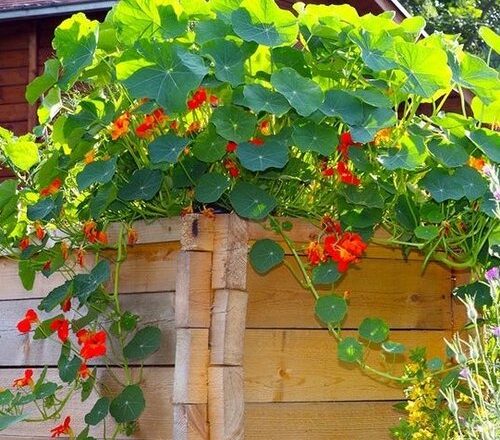If you’re new to gardening, growing food and flowers in containers is a great place to begin. Some can be started from seed, right in the container. Here are some tips for success.
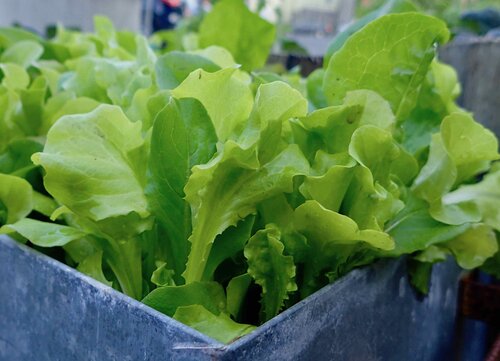
Before You Start
- The bigger the container the better. This is especially important for plants such as tomatoes and sunflowers that can grow to 4 feet tall or more. But even for smaller stature plants like salad greens a container with a diameter of 18 inches or larger will allow your plants the root space they need to grow without your having to water constantly.
- Drainage holes are essential. If your container does not have holes for drainage, make some.
- Use a quality soil mix. Garden soil is not a good choice for pots as it is too dense. Your soil mix needs to be water retentive and well drained.
- Plan to fertilize. For a productive season, fertilize your vegetables and flowers with a soluble organic fertilizer every other week.
- Water your plants faithfully. If they dry out even once it will affect their performance. This could mean daily watering in late summer!
- Place your containers in full sun. Most Vegetables and flowers require at least 6 hours of sun.
Five Easy Edibles to Grow from Seed
Salad Greens of all kinds are easy to grow in containers. In spring, sprinkle lettuce or arugula seeds about an inch apart, cover lightly with soil mix, and mist to keep moist. Cut the greens with scissors when the leaves are 4-5 inches in height. You can get two to three cuttings from a single sowing.
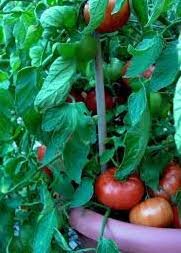
For Container Tomatoes, choose one of the many varieties developed especially for container growing. Even a bush style plant will grow to 3 feet or taller, so use a container that holds at least 5 gallons of soil mix, and plan to stake. Start your plants indoors 4 to 6 weeks before nights temps reach a consistent 50°F (10°C). Transplant them into large containers (the bigger the better!) and move them outdoors for the growing season.
Basil can be sown directly in a container that is 12- to 18-inches wide and at least 10 inches in depth once nights temps reach a consistent 50°F (10°C). Or you can start plants indoors 4-6 weeks earlier and transplant them into large containers for the summer months. For best results, thin your seedlings so that there are 3 or 4 plants per container. You can start a second crop in mid-season.
Kale is an easy all-season green to grow in containers. In spring, sow a few seeds directly into soil mix and thin the seedlings when they are an inch or two high, leaving about 3 plants in a 15-inch or larger container. Use thinnings in salads.
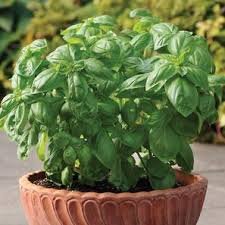
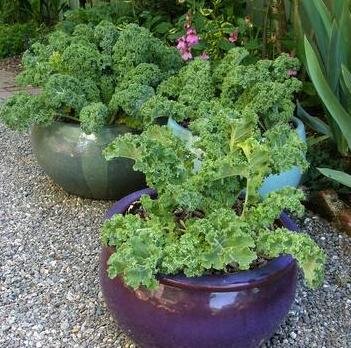
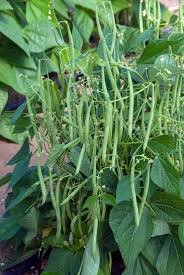
Start Bush Beans after danger of frost has passed, or when nights are consistently above 50°F (10°C). Sow seeds 3 to 4 inches apart and 1 inch deep in a large 18-inch diameter container. Your beans will be ready to pick in about two months. For an extended harvest time, start a second pot of beans 3 to 4 weeks after the first.
Container Flowers from Seed to Bloom
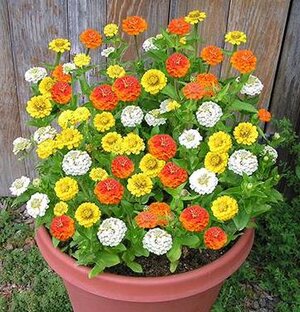
For container Zinnias, choose shorter varieties. Sow the seeds 2 inches apart in a 12-inch diameter or larger container after danger of frost has passed, or when nights are consistently above 50°F (10°C). Thin them to 6 inches apart once the seedlings are about 3 inches tall. They will attract butterflies to your porch or patio in summer.
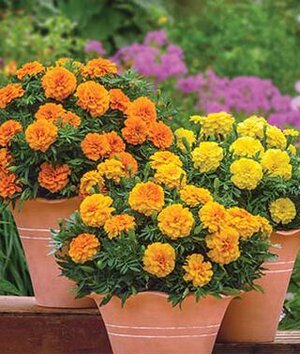
Marigolds of all types are suitable for pots. For containers smaller than 12 inches in diameter, sprinkle seeds of dwarf French marigolds and cover lightly with soil mix. Thin them to 6-8 inches apart when they are about 2 inches tall. Use a larger container for taller African marigolds, and thin them to about 10 inches apart. For a 2-week head start, sow seeds in your containers and leave them indoors, moving them outside when nights are consistently above 50°F (10°C).
Trailing Nasturtiums are particularly easy and satisfying to grow in containers. Poke seeds an inch into the soil in a 12-inch diameter or larger outdoor container a week or two before nights are consistently above 50°F (10°C). Once seedlings appear, thin to leave 3 plants per pot. Harvest flowers for salads as they appear; both leaves and flowers have a peppery taste.
Sunflowers come in a variety of colors, sizes, and growth habits. Unless your container is very large—at least 5 gallons—choose a dwarf branching variety. Sow the seeds 4-5 inches apart and cover lightly with soil mix, then thin to leave 3 plants per 15-inch diameter or larger pot. If you want to have sunflowers all summer, start new pots every three weeks. Plan to water sunflowers every day when they get to full size.
Annual Black-Eyed Susans attract pollinators and birds, and grow to 2-3 feet in height, depending on the variety. Choose a 15-inch diameter or larger container, and scatter the seeds, covering them lightly with soil mix. Thin to 6 inches apart when the seedlings are about 3 inches tall. For earlier bloom, start seeds indoors 4-6 weeks before nights temps reach a consistent 50°F (10°C) and transplant them outdoors into large containers for the summer months.
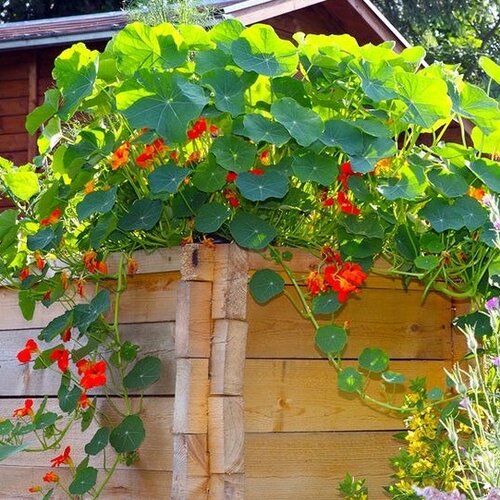
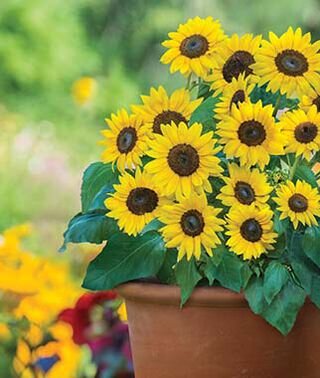
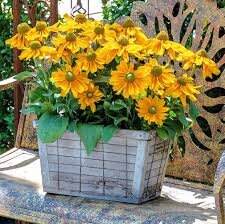
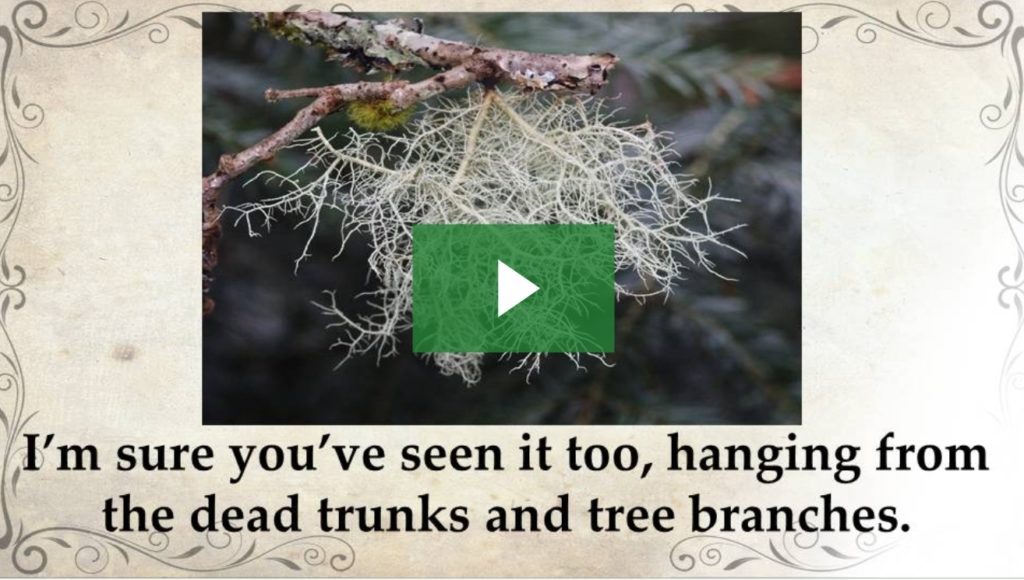
source : Home Garden

